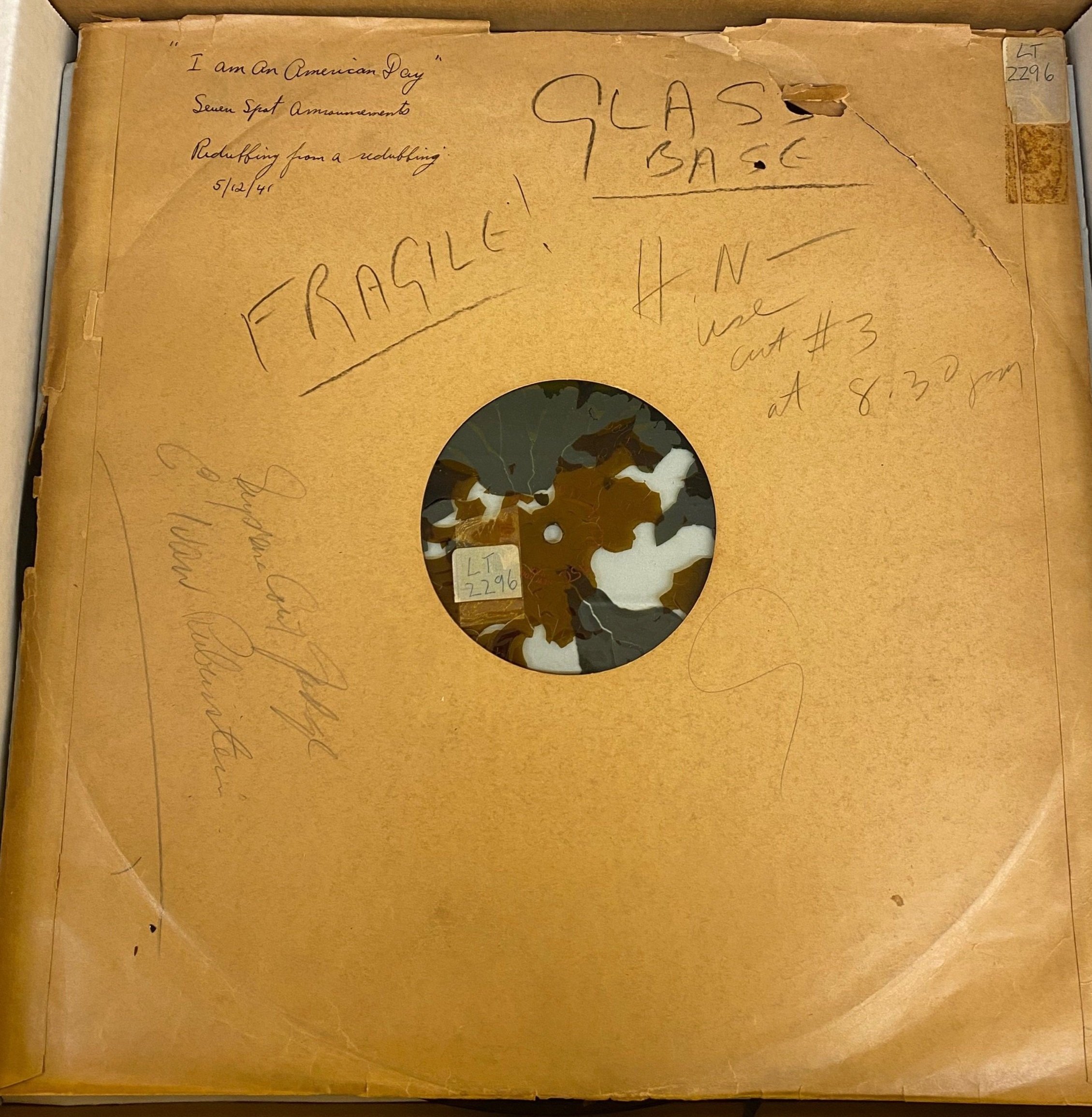The Municipal Archives has always focused on processing and providing access to collections with the broadest appeal to researchers. Two examples are the Mayoral collections and the Department of Parks series during the era of Robert Moses from the 1930s to the 1960s. Continuing this practice, the on-going processing of the New York Police Department’s Special Investigations Unit records will serve as a resource for people researching a wide array of topics in American history.
Another collection with comprehensive significance, both in terms of its intellectual content and quantity, is the Health Commissioners records.
Demonstrating for free abortion clinics, Foley Square, ca. 1970. NYPD Special Investigations Unit photograph collection. NYC Municipal Archives.
This week, For the Record focuses on the topic of abortion and family planning services, highlighting relevant material in the Health Commissioners records during the early 1970’s when Dr. Mary McLaughlin served as Commissioner.
The value of the Health Commissioners collection derives from the pre-eminence of the City’s Health Department as it defined the role and scope of public health services, not only locally, but for the entire nation. These records document how the City managed complex public health and political considerations in response to disease, epidemics and innumerable health-related challenges.
The collection is vast. It totals 742 cubic feet and is composed of 21 series, one for each of the medical professionals who served as Commissioner of the Department of Health from 1928 through the early 1990s. Researchers can explore dozens of interesting topics in the collection including chronic and degenerative ailments such as cancer, heart disease, diabetes, and glaucoma; campaigns against venereal disease, smoking, drinking, and substance abuse; vaccination programs for polio, measles, diphtheria, hepatitis, and other diseases, many of which faced controversy upon their introduction. Other subjects represented in the collection are sickle-cell anemia, fluoridation, lead poisoning, asbestos, rat and mosquito control, asthma, and methadone. The records pertaining to the AIDS epidemic, HIV testing, and needle exchanges, beginning in the 1980s, are especially important and uniquely informative.
In 2017, For the Record featured the collection in a post Milk, Midwives and Medical Quackery.
Mayor John V. Lindsay swears-in Dr. Mary McLaughlin as Commissioner of the Department of Health, May 28, 1969, City Hall. 1969 Annual Report of the Health Services Administration, Municipal Library.
On May 28th, 1969, Mayor John V. Lindsay appointed Dr. Mary McLaughlin as Commissioner of the Department of Health. She was the second woman to hold the post (the first was Leona Baumgartner who served from 1954-1962). Under McLaughlin’s leadership, the Health Department launched initiatives that addressed narcotics addiction, mental health, and lead poisoning. The series also provides ample documentation of another important issue– abortion.
Memorandum regarding abortion practices in the United Kingdom, filed January 1, 1970. Health Commissioners Records. NYC Municipal Archives.
In 1970, three years before the Roe v. Wade U. S. Supreme Court decision that legalized abortion all around the country, New York State enacted legislation that permitted abortions up to the 24th week. Reviewing the correspondence, pamphlets, and news articles in the 33 folders on the topic in the Dr. McLaughlin series reveals that New York’s abortion legislation was influenced by similar debate and action in the United Kingdom.
The series also provides relevant material regarding where abortions could be performed. Specifically, whether women could obtain the service at clinics and doctors’ offices, not just hospitals. Dr. McLaughlin championed a ban against health providers performing abortions in their private offices. She believed regulating the procedure would be more effective in hospitals. Dr. McLaughlin’s motivation was to keep women as safe as possible; hence the initial decision to limit the procedure to hospitals.
Correspondence received June 1970. Health Commissioners Records. NYC Municipal Archives.
Dr. McLaughlin held firm on her decision, weathering criticism from her colleagues, constituents, and the press: “We don't want to act as detectives who go in to investigate after something has happened...we’re interested in the prevention of deaths and complications.” (New York Times, September 18, 1970). Eventually, the Board of Health enacted regulations that allowed early terminations (up to twelve weeks) to be performed at clinics.
Another aspect of the subject that can be investigated in the records is the number of procedures. The Health and Hospitals Corporation anticipated that more than 600 abortions would be performed per week, or roughly 110 a day. As it turned out this number was an over-estimation; the actual number was fewer than 800 procedures in two weeks.
Information about abortion is not just confined to the 33 folders in the Dr. McLaughin series. There are more than 1,400 folders on the topic throughout the Health Commissioners records.
Researchers are invited to explore this rich resource. The collection finding guide provides a complete description of the collection and information about access.




